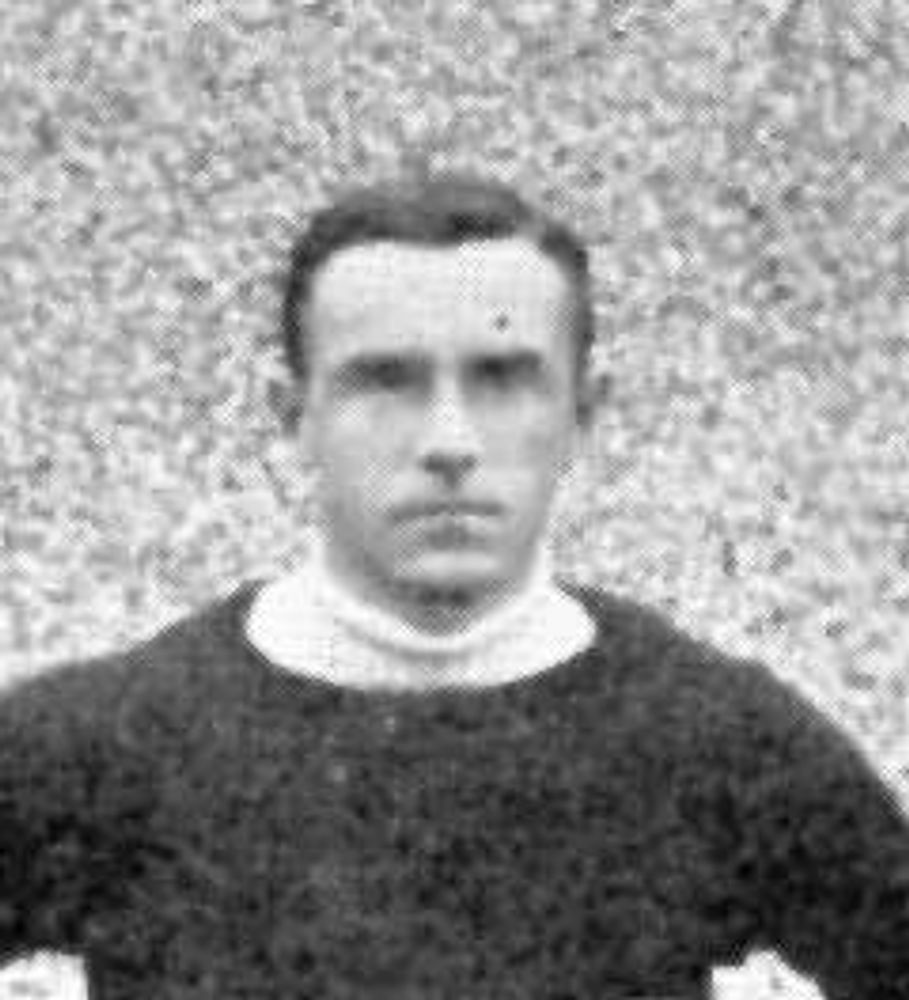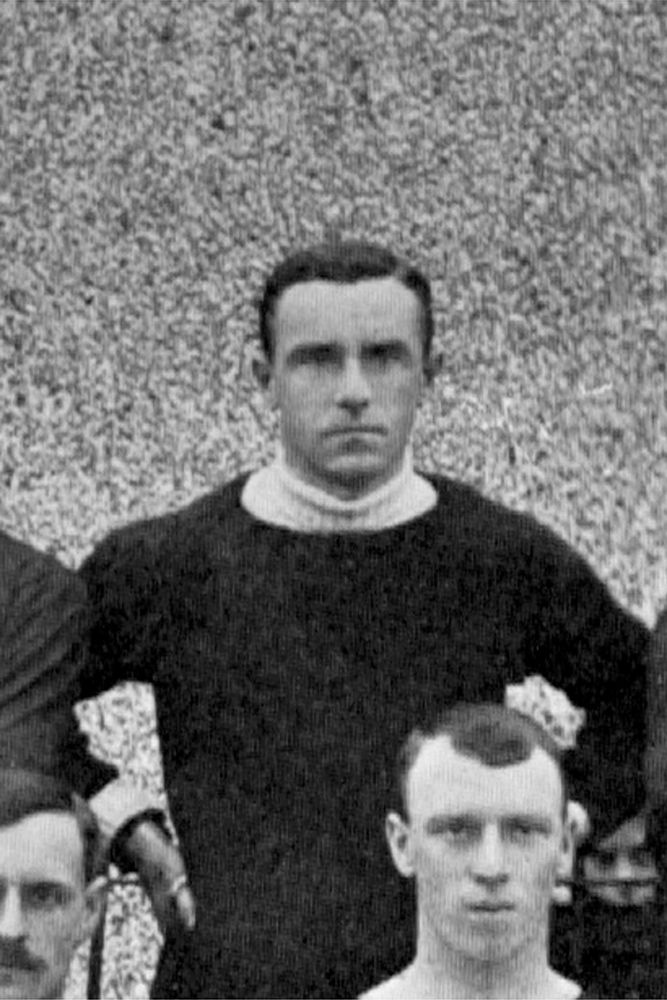G is for… GOALKEEPERS by Dave Coxon
When it comes to goalkeepers, I think it’s safe to say that we have certainly been well blessed in that department. Banks, Shilton, Butland to name but a few, but I’m going to tell you a story of football’s first superstar, a ‘keeper who went on to represent both Stoke and Woolwich Arsenal.
The name Leigh Richmond ‘Dicky’ Roose may not be a name on everyone’s lips today but it certainly was over 100 years ago. Born in Holt near to Wrexham, Roose, the son of a Presbyterian preacher began his footballing career with Aberystwyth Town in 1895.
Even in those early years the words eccentric and Roose often appeared in the same sentence.
He was the ‘pin up’ boy of the time and definitely a ladies man. His performances for Aberystwyth not only led to international recognition with Wales, but to interest from the top clubs.
Before I go any further, I think that it’s worth taking a look at what the game was like as it moved into the twentieth century.
As the game evolved it was more a mixture of football and rugby. For example, the ‘keeper was allowed to handle the ball anywhere inside his own half and to tackle as we see in rugby today.

Now this suited a 6’1”, 13 stone Roose down to the ground and on more than one occasion a forward would find themselves on the wrong end of a stray punch in a goalmouth scramble.
He was certainly not one for staying on his line and one report tells how he raced from his goal when his full-back was caught out of position to shoulder charge the winger out of play rendering him unconscious.
It is believed that it was due to Roose’s desire to start an attack by carrying the ball to the halfway line that the FA changed the law in 1912 preventing ‘keepers from handling outside the area.
Roose signed for Stoke in 1901, the first of his two spells for the Club and he quickly became a crowd favourite. Quite simply he was a showman and liked nothing more than being in the thick of things.
For example, if the ball was at the other end of the ground, he would treat the crowd to gymnastics displays with the help of the crossbar. He finished his show by telling jokes to the crowd.
He was a reporter’s dream and when Roose was in town they would never have to look far for a story. On one occasion after a penalty was awarded against Stoke, the showman turned to his audience and waved and then looked at the penalty taker and gave him a wave before repeating this after saving the spot kick.
By the time Roose joined the Club he already had a reputation as a practical joker and so when he ran from the field in his 10th Stoke game at Anfield the crowd wondered what was to follow next.
As it turned out it was no laughing matter, before the kick-off several Stoke players had reported ill and so as it turned out Dicky wasn’t heading for his bag of tricks, it was a visit to the toilet.
Only seven Stoke players took to the field for the second half and some of those were under the weather having had tainted fish for lunch. It was no surprise then that Liverpool ran out 7-0 winners.
On then to a North Staffs and District game back in April 1910. Even though it was Stoke Reserves v Port Vale, surely there can’t be a story in this one can there? Well, by this time Roose had left the Potters and was asked to guest for Port Vale in this one.
Not too much of a problem there… well, there wouldn’t have been had he not taken to the field wearing his old Stoke shirt.

His performance on the day was quite breath-taking which angered both sets of supporters. Vale because they saw their ‘keeper wearing a Stoke shirt and Stoke because he was saving everything that was thrown at him.
Following yet another top class save and with Vale leading 2-0, all 7,000 supporters ran onto the pitch with just one thing on their mind, to dunk the prankster in the Stoke shirt into the Trent. Thankfully swift action by the stewards and a local policeman spared him this fate.
With the culprit now out of the way proceedings required some divine intervention, enter the Stoke Chairman, the Reverend A.E. Hurst, who ran onto the pitch to appeal for calm but in the fracas, he was knocked out by one of the Stoke forwards.
The incident was investigated by the Staffs FA and the decision was to close the ground for the first two weeks of the 1910/11 season. Roose told the waiting press how surprised he was by the reaction from the crowd for a friendly.
He did understand to some degree when he was told that this game was to decide the Championship, as it was the FA decided to void the Championship. Leigh joined the army as a private in the Royal Fusiliers in 1914, serving on the Western Front.
During this time, he was awarded the Military Medal for his actions in the trenches when the Flammen Werfer attack began. Despite choking on fumes, he battled on and continued to throw grenades with, as one colleague put it, the accuracy that he displayed when finding a teammate on the football field.
For his bravery he was promoted to Lance Corporal. Sadly though, there was no happy ending as just weeks later he was killed at the Battle of the Somme. His body was never recovered.
He died at just 38 years old on the 7th October 1916. His name appears on the War Memorial to the missing soldiers at Thiepval.
Roose played 147 times for Stoke and 13 for Woolwich Arsenal. He retired from football whilst with the London club after failing to recover from two broken wrists whilst with Sunderland.
G is also for… GREENHOFF
What can you say? Jimmy Greenhoff was quite simply the finest footballer not to represent England at senior level. During the mid-70s he was phenomenal, and he stuck up a terrific partnership with John Ritchie.

He was one of the finest volleyers in the game and even to this day he is reminded of his goal back in December 1974 at Birmingham, a goal that was voted ‘Goal of the Season’.
He was no stranger to success, collecting winners medals in the League Cup and Fairs Cup at Leeds United plus a runners-up medal in the latter and then of course, a League Cup winner at Stoke, while at Manchester United he scored the winning goal in the 1977 FA Cup Final against Liverpool and picked up a runners-up medal two years later.
He was definitely a victim of circumstance after he was forced to move to United in 1976 when the Butler Street Stand roof at the Victoria Ground was blown off in gales. More disappointment followed on one of the happiest days of his career when his shirt was stolen from the Wembley dressing room after that 1977 Cup Final.
Jimmy scored 97 goals from 338 appearances for Stoke and then after he was told that he was past it he scored a further 36 times from 122 games for United – not bad eh?